
Khrapovitsky Bridge is one of the bridges in the center of St. Petersburg.
The Khrapovitsky Bridge spans the Moika River, and connects the 2nd Admiralteysky and Kolomensky Islands in the Admiralteysky district of St. Petersburg.
The bridge connects the Moika River embankment with the embankments of the Admiralteysky and Novo-Admiralteysky canals.
The name "Khrapovitsky" bridge has been worn since 1770, after the name of the owner of the mansion located near the bridge - A.V. Khrapovitsky, who was the secretary of Empress Catherine II and the author of "Memoirs" containing materials on the history of Russia in the last quarter of the 18th century.
The bridge is 45.4 meters long and 20.5 meters wide.
The Khrapovitsky Bridge is a single-span reinforced concrete structure of a frame-cantilever system, the superstructure of which is made of prestressed reinforced concrete and has a curved outline of the lower belt.
The abutments of the bridge are massive reinforced concrete on a pile foundation, lined with granite.
A cast-iron lattice of a modern pattern is installed on the bridge. Granite curbstones are located at the ends of the railing.

The Khrapovitsky Bridge is a roadway and pedestrian.
Pedestrian sidewalks are located on both sides of the bridge.
The roadway is separated from the sidewalks by a granite curb.
The pavement on the bridge is asphalt.
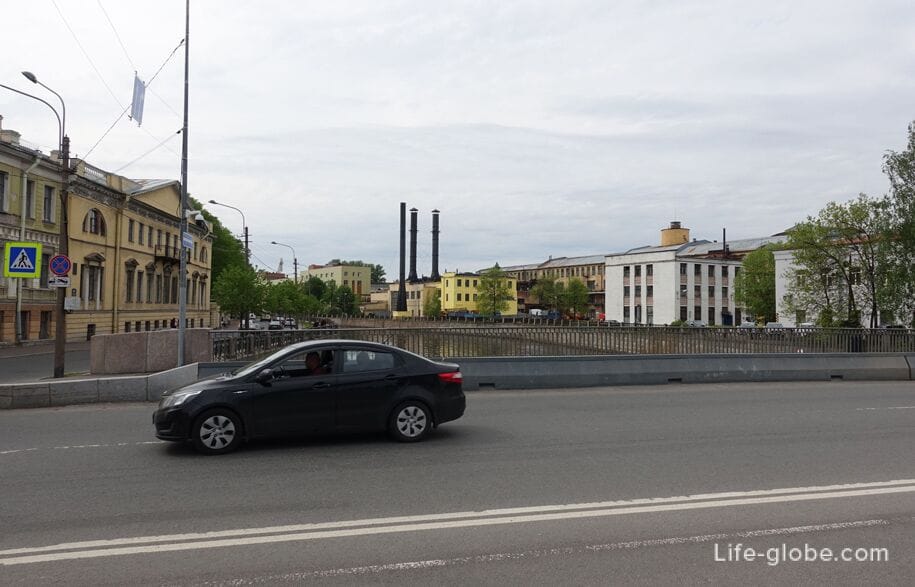
From the Khrapovitsky Bridge, views of the Moika River, including the river embankments with historical buildings, as well as the island of New Holland and the 2nd Krushtein Bridge over the Admiralty Canal, which connects the 2nd Admiralty Island with the island of New Holland, open.
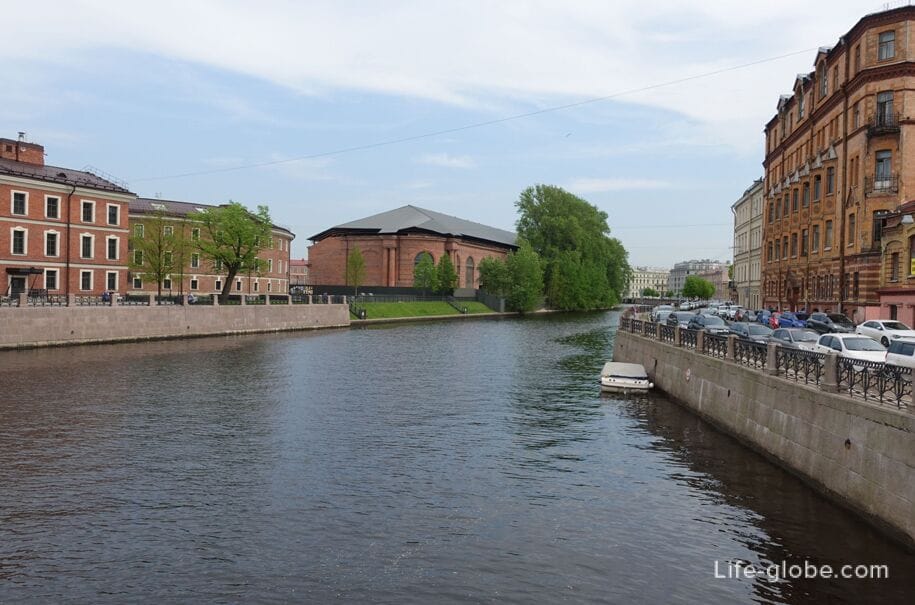
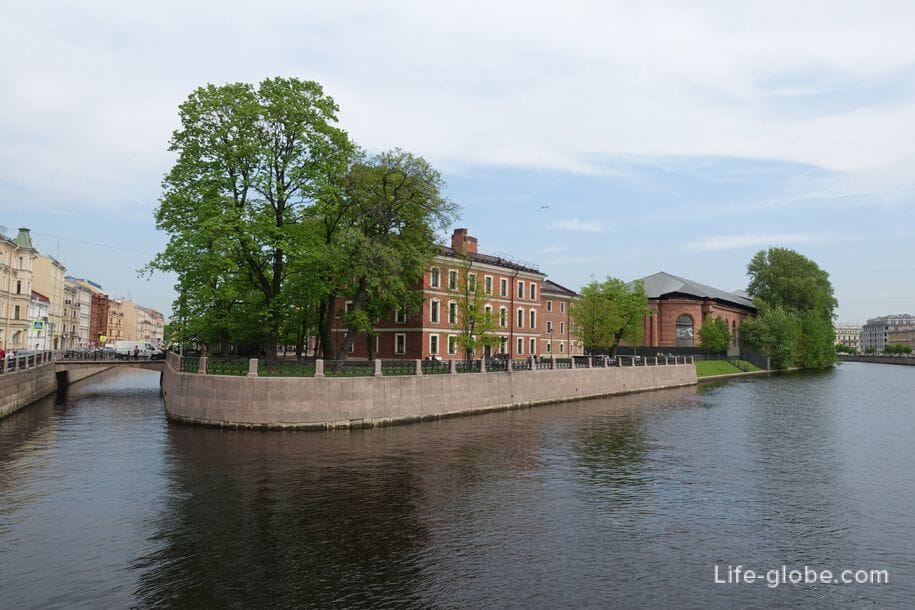
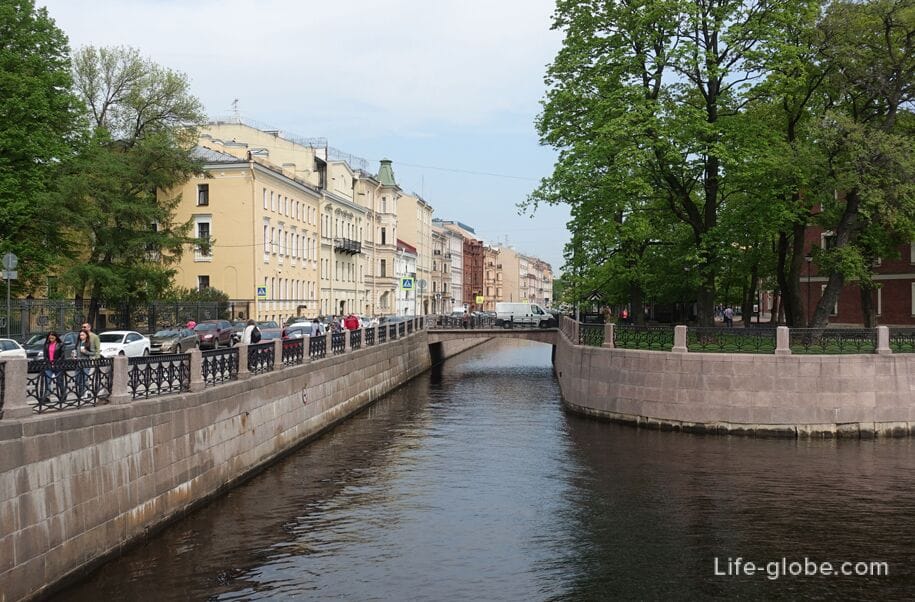
On both sides of the Khrapovitsky Bridge there are iconic historical buildings.
On the side of the Moika River Embankment there is a mansion and V.A. Schroeter's own house, made in brick style with Gothic elements and once belonged to one person - Viktor Alexandrovich Schroeter. More about Schroeter's houses on the Moika...

On the side of the Admiralty and Novo-Admiralty Canals is the former Bobrinsky Palace, which is made in the style of classicism and now houses the Faculty of Liberal Arts and Sciences of St. Petersburg State University within its walls.
It was at this place, before the construction of the palace, that the estate of A.V. Khrapovitsky was located, after whom the bridge got its name.
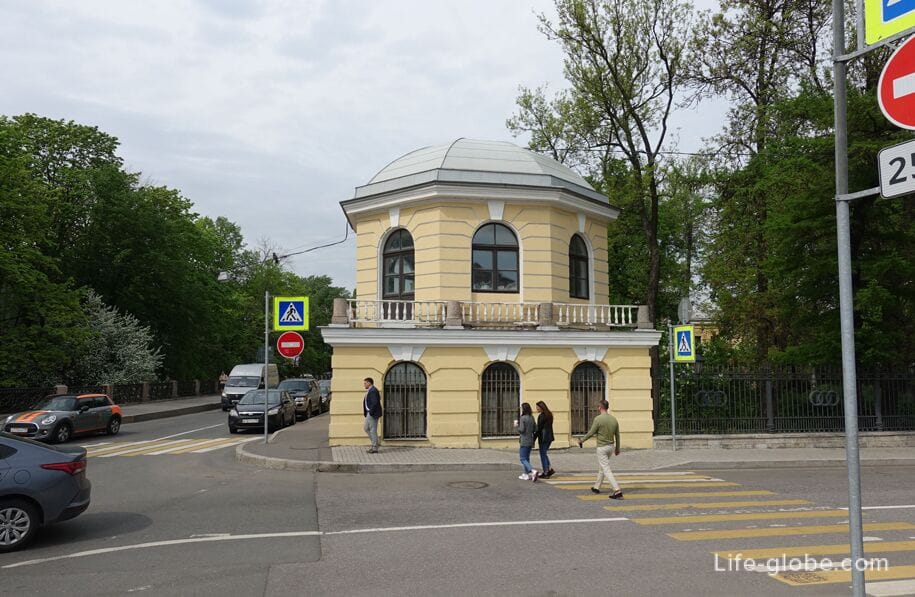
At this place, since 1737, there has been a multi-span wooden bridge of a beam system with a draw span in the middle for the passage of ships going to New Holland - to the Galley Yard, where small galley ships were built. Then the island on which New Holland is now located was called Galerny. In 1740, the Galley Yard was transferred to Vasilievsky Island.
In 1737-1738, the bridge was called Yellow, according to its color. In 1753, it was renamed "Galley" or "Ship", according to the nearby Galley Shipyard.
On the plan of St. Petersburg in 1798, the bridge is designated as "Sinyavin Bridge", in honor of Naum Akimovich Senyavin (according to other sources Sinyavin), who was a vice admiral, an associate of Peter I and commanded the Russian galley fleet during the Northern War.
In 1935, during the next repair of the wooden bridge, the drawbridge was eliminated.
In 1965-1967, according to the project of architect L.A. Noskov, the bridge was rebuilt into a single-span reinforced concrete frame-cantilever system.
Upstream of the Moika River from the Khrapovitsky Bridge are Krasnoflotsky and Kissing bridges.
Coordinates of the Khrapovitsky Bridge: 59°55'44.0"N 30°17'06.0"E (59.928889, 30.285000).
Nearest metro stations: "Spasskaya", "Sadovaya", "Sennaya Ploshchad" and "Admiralteiskaya".
All accommodation facilities in St. Petersburg, including in the city center and more remotely from it, can be viewed and booked here